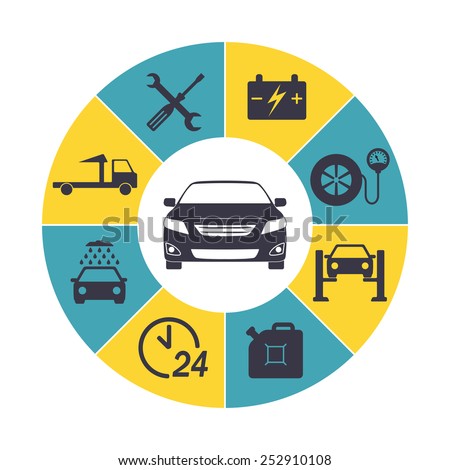Uncover The Significances Behind The Dashboard Caution Lights In Your Automobile To Safeguard The Health And Wellness Of Your Lorry
Uncover The Significances Behind The Dashboard Caution Lights In Your Automobile To Safeguard The Health And Wellness Of Your Lorry
Blog Article
Post By-Cheng Dreier
When you lag the wheel, those beautiful caution lights on your control panel can be a little bit perplexing. Do https://brake-service-near-me52849.vblogetin.com/33207474/failing-to-adhere-to-regular-upkeep-routines-may-lead-to-expensive-repair-services-and-threaten-your-security-while-driving-find-the-value-of-staying-proactive-in-this-matter recognize what they're attempting to tell you concerning your cars and truck's health and wellness? Recognizing ase certified mechanic of these lights is crucial for your safety and security and the long life of your lorry. So, the following time among those lights turns up, would not you want to analyze its message precisely and take the required steps to address it?
Common Caution Lighting and Interpretations
Determine usual warning lights in your automobile and understand their significances to ensure secure driving.
One of the most normal warning lights consist of the check engine light, which indicates issues with the engine or exhausts system. If this light comes on, it's critical to have your automobile examined without delay.
The oil pressure warning light shows reduced oil pressure, requiring immediate interest to avoid engine damage.
A blinking battery light could suggest a defective charging system, possibly leaving you stranded otherwise addressed.
The tire pressure surveillance system (TPMS) light signals you to reduced tire pressure, influencing car security and gas effectiveness. Neglecting auto ac repair near me could lead to risky driving conditions.
The ABS light suggests a problem with the anti-lock braking system, jeopardizing your ability to stop quickly in emergency situations.
Lastly, the coolant temperature warning light warns of engine overheating, which can lead to extreme damages otherwise fixed quickly.
Comprehending these common warning lights will certainly aid you address problems immediately and maintain safe driving conditions.
Value of Prompt Attention
Understanding the common warning lights in your auto is just the very first step; the importance of immediately dealing with these cautions can not be highlighted enough to ensure your safety and security on the road.
When a caution light brightens on your control panel, it's your vehicle's way of interacting a potential concern that requires focus. Neglecting these warnings can bring about extra extreme issues later on, compromising your safety and possibly costing you much more out of commission.
Trigger attention to cautioning lights can prevent failures and crashes. As an example, a blinking check engine light might suggest a misfire that, if left unattended, could cause damage to the catalytic converter. Addressing this immediately can save you from a pricey repair.
In a similar way, a brake system warning light may indicate reduced brake fluid or used brake pads, crucial parts for your safety when driving.
DIY Troubleshooting Tips
If you discover a caution light on your control panel, there are a few DIY troubleshooting tips you can try prior to seeking professional assistance.
The primary step is to consult your vehicle's guidebook to understand what the details caution light suggests. Sometimes auto repair manuals can be as easy as a loose gas cap causing the check engine light. Tightening the gas cap may fix the issue.
One more usual issue is a reduced battery, which can activate different warning lights. Inspecting the battery connections for rust and guaranteeing they're safe and secure could take care of the issue.
If a caution light persists, you can attempt resetting it by detaching the cars and truck's battery for a couple of minutes and after that reconnecting it. Furthermore, examining your car's fluid levels, such as oil, coolant, and brake liquid, can help troubleshoot alerting lights connected to these systems.
Conclusion
Finally, understanding your cars and truck's warning lights is necessary for maintaining your automobile running efficiently and safely. By immediately resolving these signals and recognizing what they indicate, you can prevent expensive repair work and possible malfunctions.
Bear in mind to consult your automobile's guidebook for specific information on each cautioning light and do something about it accordingly to make sure a hassle-free driving experience.
Remain educated, remain secure when driving!
